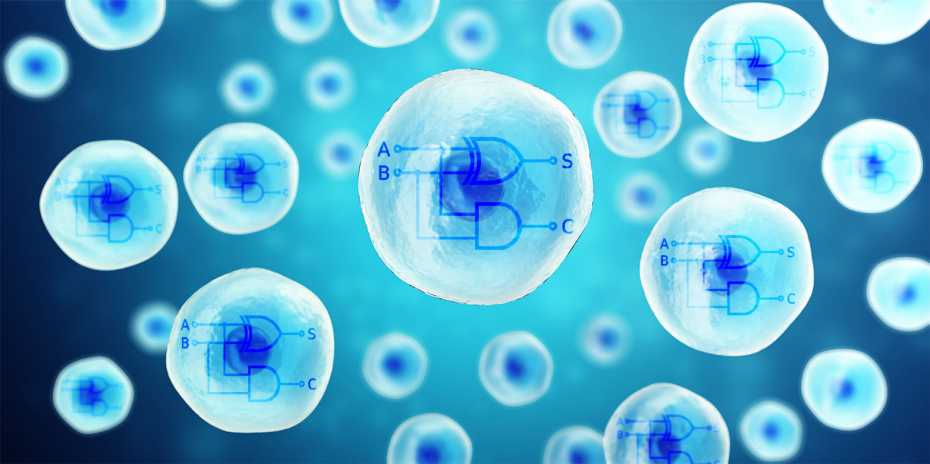Biosynthetic dual-core computer in a living cell
- Transfer

ETH scientists have integrated two core processor based on CRISPR-Cas9 in human cells. This is a huge step towards creating powerful biocomputers.Managing gene expression using gene switches based on a model borrowed from the digital world has long been one of the main problems of synthetic biology. The digital method uses logic elements to process the input signals, creating circuits in which, for example, the output signal C is created only when the input signals A and B are present at the same time.
So far, bioengineers have attempted to create such digital circuits using protein gene switches in cells. However, they had serious flaws: they were not flexible, they could understand only simple programs and were able to process only one input at a time, for example, a specific molecule. Thus, more complex computational processes in the cell were possible only under specific conditions, unreliable and often failed.
Even in the digital world, circuits depend on a single input in the form of electrons. However, such schemes compensate for this with their speed, executing billions of commands per second. Cells are slower compared to them, but can process 100,000 different molecules per second as input. And yet, past cellular computers have not even come close to exhausting the enormous computing power of a human cell.
Central processor from biological components
A team of researchers led by Martin Fussenegger, professor of biotechnology and bioengineering at the Department of Biological Sciences and Engineering at ETH Zurich in Basel, has now found a way to use biological components to create a flexible central processor that accepts various programs. The processor, developed by ETH scientists, is based on a modified CRISPR-Cas9 system and can work with any number of inputs in the form of RNA molecules.
A special version of the Cas9 protein forms the core of the processor. In response to the input made by the RNA guides, the processor regulates the expression of the gene, which in turn produces a specific protein. Thanks to this approach, researchers can program scalable circuits in human cells - for example, digital adders, they consist of two inputs and two outputs and can add two single-digit binary numbers.
Powerful multi-threaded information processing
Researchers took another step: they created a biological dual-core processor, similar to a digital one, integrating two cores into a cell. To do this, they used components of CRISPR-Cas9 from two different bacteria. Fussenegger was delighted with the result, saying: "We created the first cellular computer with several cores."
This biological computer is not only extremely small, but theoretically can be expanded to any possible size. “Imagine a tissue with billions of cells, each equipped with its own dual-core processor. Such “computing organs" can theoretically achieve processing power that far exceeds the processing power of a digital supercomputer - and uses only a small fraction of the energy, "says Fussenegger.
Application in the diagnosis and treatment
A cellular computer can be used to detect biological signals in the body, such as metabolic products or chemical signals, to process them and respond accordingly. With a properly programmed processor, cells can interpret two different biomarkers as input signals. If only biomarker A is present, then the biocomputer responds by forming a diagnostic molecule or pharmaceutical substance. If the biocomputer only registers biomarker B, it starts the synthesis of another substance. If both biomarkers are present, this causes a third reaction. Such a system may find application in medicine, for example, in the treatment of cancer.
“We could also integrate feedback,” says Fussenegger. For example, if biomarker B remains in the body for a longer period of time at a certain concentration, this may indicate cancer metastasis. The biocomputer will produce a chemical aimed at killing cancer.
Multi-core processors possible
“This cellular computer may seem like a very revolutionary idea, but it’s not,” Fussenegger emphasizes. He continues: “The human body itself is a large computer. His metabolism has been using the computing power of trillions of cells since time immemorial. ” These cells constantly receive information from the outside world or from other cells, process signals and react accordingly - whether it be chemical signals or the start of metabolic processes. “And unlike an electronic supercomputer, this big computer only needs a piece of bread,” Fussenegger notes.
His new goal is to integrate a multi-core computer structure into a cell. “It will have more computing power than the current dual-core structure.”
